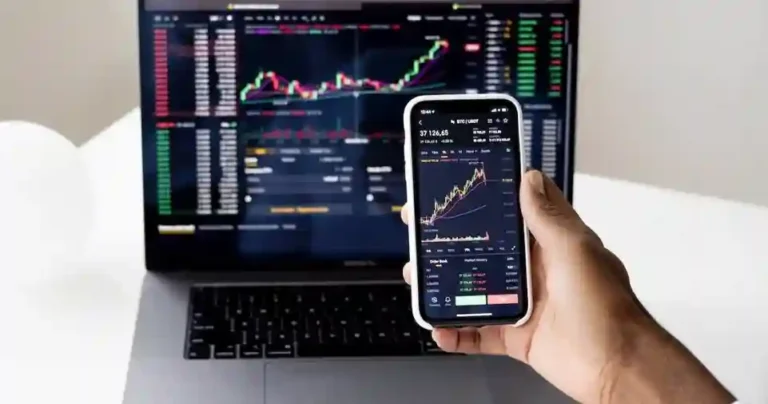Crypto trading has gained immense popularity, attracting both novice and seasoned traders with its potential for substantial profits.
However, the volatile nature of cryptocurrencies demands a strategic approach to minimize risks and maximize returns.
One such strategy is technical analysis—a method that uses historical price data and trading volumes to predict future market trends.
By mastering technical analysis, traders can make informed decisions, identify lucrative opportunities, and mitigate losses.
This comprehensive guide aims to demystify technical analysis, offering insights into its principles, tools, and application in the dynamic world of crypto trading.
What is Technical Analysis?
Technical analysis is a method used to evaluate and forecast price movements based on historical market data, such as price charts and trading volumes.
Unlike fundamental analysis, which focuses on the intrinsic value of an asset, technical analysis centers around identifying patterns and trends in market behavior.
The underlying principle is that history tends to repeat itself, and market trends are often driven by collective psychological factors like fear and greed.
Why Use Technical Analysis in Crypto Trading?
The cryptocurrency market is notoriously volatile, with prices often experiencing dramatic swings within short periods.
This volatility creates both challenges and opportunities.
Technical analysis equips traders with the tools to navigate these fluctuations by providing insights into market sentiment and potential price movements.
By analyzing charts, patterns, and indicators, traders can:
- Identify entry and exit points for trades.
- Predict potential price reversals or continuations.
- Manage risks by setting stop-loss and take-profit levels.
Incorporating technical analysis into your trading strategy can lead to more systematic and less emotion-driven decisions, enhancing your chances of success in the crypto market.
ALSO READ: How to Identify and Invest in Emerging Cryptocurrencies
Key Tools and Indicators in Technical Analysis

Candlestick Charts
Candlestick charts are one of the most widely used tools in technical analysis.
Each candlestick represents a specific time frame, showing the opening, closing, high, and low prices of an asset.
Patterns formed by candlesticks, such as Doji, Hammer, or Engulfing, can signal potential market reversals or continuations.
Moving Averages (MA)
Moving averages smooth out price data to identify trends over a specified period.
Common types include the Simple Moving Average (SMA) and the Exponential Moving Average (EMA).
Crossovers between short-term and long-term moving averages often indicate buy or sell signals.
Relative Strength Index (RSI)
RSI is a momentum oscillator that measures the speed and change of price movements.
It ranges from 0 to 100 and helps traders determine overbought or oversold conditions in the market.
An RSI above 70 typically indicates overbought conditions, while below 30 suggests oversold conditions.
Bollinger Bands
Bollinger Bands consist of a middle band (a moving average) and two outer bands that represent standard deviations.
These bands expand and contract based on market volatility, helping traders identify potential breakout opportunities.
Fibonacci Retracement
The Fibonacci retracement tool uses horizontal lines to indicate potential support and resistance levels based on the Fibonacci sequence.
Traders often use this tool to predict price corrections or extensions during an uptrend or downtrend.
Steps to Perform Technical Analysis in Crypto Trading
Step 1: Define Your Trading Goals
Before diving into technical analysis, it’s crucial to establish your trading objectives.
Are you looking to execute short-term trades or invest for the long term? Your goals will influence the type of analysis and tools you use.
Step 2: Choose the Right Trading Platform
Selecting a reliable trading platform with comprehensive charting tools is essential.
Platforms like TradingView, Binance, and Coinbase Pro offer advanced features for technical analysis, including customizable charts and real-time data.
Step 3: Analyze Price Charts
Start by studying candlestick charts to identify patterns and trends.
Look for formations that indicate potential price movements, such as triangles, head-and-shoulders, or double tops and bottoms.
Step 4: Use Indicators and Oscillators
Incorporate technical indicators like RSI, MACD, and Bollinger Bands to gain deeper insights into market dynamics.
Combine multiple indicators to confirm signals and reduce the likelihood of false predictions.
Step 5: Monitor Support and Resistance Levels
Identify key support and resistance levels on the chart.
These are price points where the asset has historically struggled to move below or above, providing clues about future price movements.
Step 6: Develop a Trading Plan
Based on your analysis, create a detailed trading plan outlining your entry and exit points, stop-loss levels, and profit targets.
Sticking to a well-defined plan can help you stay disciplined and avoid impulsive decisions.
Common Mistakes to Avoid in Technical Analysis

Overreliance on Indicators
While indicators are valuable tools, relying solely on them without considering broader market conditions can lead to inaccurate predictions. Use indicators as part of a holistic approach.
Ignoring Risk Management
Failing to set stop-loss orders or calculate position sizes can result in significant losses. Always prioritize risk management as a core component of your strategy.
Neglecting Market News
Although technical analysis focuses on historical data, it’s essential to stay updated on news and events that could impact the crypto market, such as regulatory changes or technological advancements.
ALSO READ: How to Diversify Your Crypto Portfolio Like a Pro 2024
Conclusion
Mastering technical analysis is a critical skill for any crypto trader aiming to navigate the market’s complexities.
By understanding key principles, utilizing effective tools, and avoiding common pitfalls, you can enhance your trading strategies and make informed decisions.
Whether you’re a beginner or an experienced trader, continuous learning and practice are vital to staying ahead in the ever-evolving world of crypto trading.
Start applying these techniques today to unlock new opportunities and achieve your trading goals.











